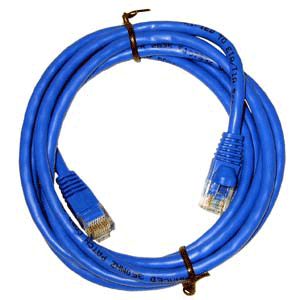There’s a tendency in tech to think that higher numbers are better. After all, the iPhone 13 is better than the iPhone 2, right? So it would seem that Category 6 cable would be better than Category 5e cable in every single case. It’s part of our culture. After decades of dealing with technology, we’re conditioned to think that newer is better, and newer almost always means a higher version number.
But does that hold true with category cables? (By the way, what you call “Ethernet cables” are more properly called “category cables.”) The answer is: not necessarily. It’s all about what you actually need.
Cat5 vs. Cat5e
First, let’s talk about the difference between Category 5 and Category 5e, also called Enhanced Category 5. There’s a big difference here — Category 5e will support “Gigabit Ethernet” or 1000BaseT which is the current networking standard, while Category 5 just isn’t built for it. Luckily, pretty much every cable made today is Category 5e, even if it just says it’s Cat 5. Category 5e has been around for over a decade at this point.
Category 6 cable
On the other hand, Category 6 cable is made to withstand the rigors of 10-Gig Ethernet, which is a standard used in some businesses for super-fast network transfers. It’s not likely to cross over into home use since Gigabit Ethernet is already 20 times faster than most people’s home internet connections. I’m not talking about the rated speed that they tell you in commercials, by the way. I’m talking about the speed you actually get. That tends to be lower.
So that raises a question. If you can’t connect to the outside world at that speed, what’s the point?
The real truth about category cables
As a matter of fact, plain old Category 5 cable will do a great job of handling the fastest internet connection you’re likely to have. Even Category 4 cable which isn’t sold today will handle a 15 megabit connection. Think about that.
If you’re planning on putting all your cable in the walls where it might stay for 10 years or more, you’re certainly forgiven for thinking that Category 6 is a better choice, and it probably is since you just don’t know what you’ll be doing a decade from now. All that said, you’re probably just as safe with Category 5e for a while.
If you pick up an old cable, you can often see what kind of cable it is by looking at any codes on the wire itself. If there is no code, you shouldn’t be terribly worried. Unless you’re picking up something you haven’t touched in well over 10 years, you’ll still be safe.
Oh by the way, in case you were wondering, there’s already a Category 7, but it’s more about shielding and less about speed, so it’s ok not to even worry about it for a long, long while.
Get the cables you need from Solid Signal
Shop at SolidSignal.com for category cables and everything else you need to live your best digital life. We’re here for you 24/7 online! If you need help choosing the right part, give us a call during East Coast business hours! The number is 888-233-7563. When you call, you’ll get an expert in our Michigan corporate offices. If it’s after hours, fill out the form below and we’ll get back to you, usually within one business day.





